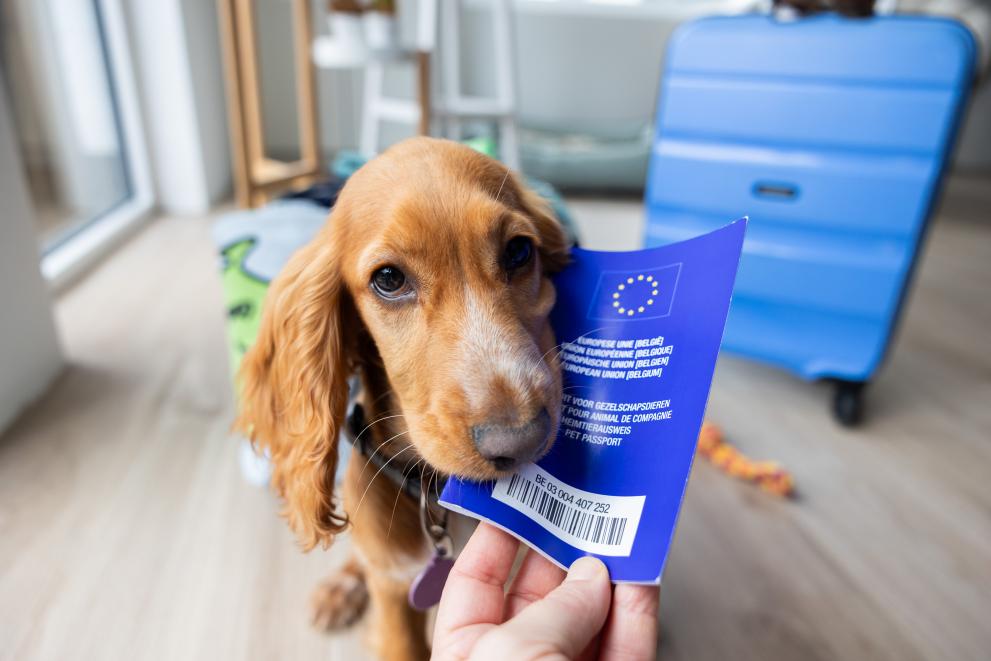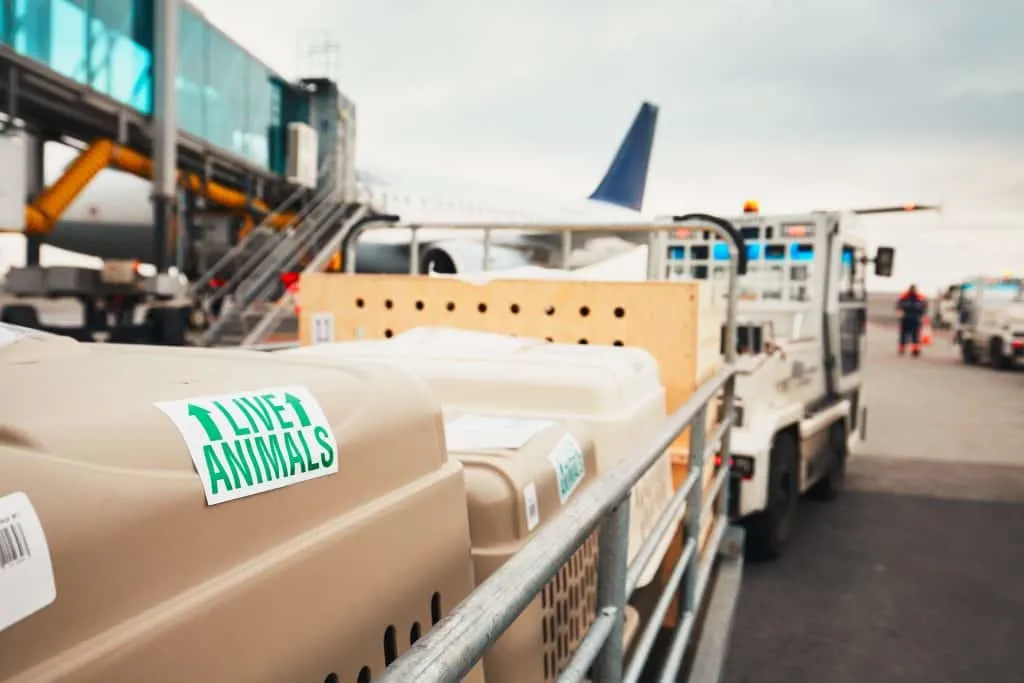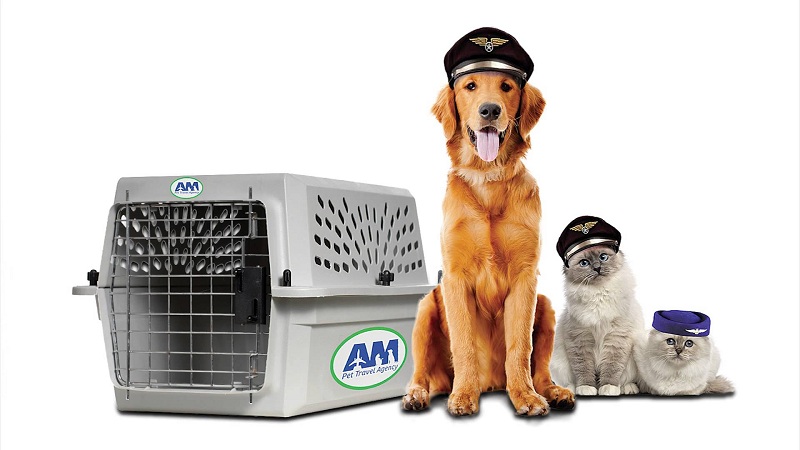Regulations for Pet Air Travel to Europe – A Complete Guide for 2025
Pet owners relocating to Europe or planning to travel with their furry companions must navigate a complex web of airline and governmental regulations. The European Union (EU) has specific rules and standards regarding the importation of dogs, cats, and ferrets via air travel to ensure public health and animal welfare.
In this comprehensive guide, we break down the key regulations for pet air travel to Europe, explain how to prepare your pet, and outline the latest updates in 2025. Whether you’re moving, vacationing, or reuniting with your pet, understanding these rules will ensure a smooth, stress-free journey for both you and your beloved animal.
1. Why You Need to Follow EU Pet Import Regulations

Europe is one of the most pet-friendly regions in the world, but it also has strict border health and safety regulations. These rules are in place to prevent the spread of rabies and other infectious diseases.
Failure to comply can result in:
-
Your pet being quarantined, sent back to the country of departure, or even euthanized in extreme cases.
-
Hefty fines or being banned from importing pets again.
-
Delays in your travel or relocation plans.
By adhering to official EU guidelines, you ensure the safety of your pet and others, and avoid unnecessary stress or legal complications.
2. Pets Allowed to Enter Europe by Air
As of 2025, the European Union only permits the non-commercial import of the following animals as pets:
-
Dogs
-
Cats
-
Ferrets
Other animals such as birds, reptiles, and rodents are subject to different regulations, and may require additional permits or restrictions depending on the specific country.
Each traveler is allowed to bring up to five (5) pets unless they can prove they are attending a competition, show, or sporting event.
3. Basic Requirements for Bringing Pets to Europe
To bring a pet into Europe, several mandatory requirements must be met prior to boarding your flight.
🐾 Microchip Identification
-
Your pet must be microchipped with an ISO 11784/11785 compliant 15-digit chip.
-
The chip must be implanted before rabies vaccination.
-
If your pet already has a different type of chip, you must carry your own scanner.
💉 Rabies Vaccination
-
Pets must have received a valid rabies vaccination.
-
The vaccination must be administered after microchipping.
-
Pets must be at least 12 weeks old to be vaccinated.
-
A 21-day waiting period after primary rabies vaccination is required before travel.
📋 EU Health Certificate
-
If traveling from a non-EU country, you must obtain an EU Animal Health Certificate (AHC) completed and signed by an authorized veterinarian.
-
This certificate must be:
-
Issued within 10 days before entry into the EU.
-
Accompanied by proof of rabies vaccination and microchipping.
-
✈️ The certificate is valid for entry into the EU for 10 days, intra-EU travel for 4 months, or until the rabies vaccine expires—whichever comes first.
🧪 Rabies Titer Test (Blood Test)
Required only if you’re entering from a “high-risk” country (unlisted country), such as:
-
Vietnam
-
India
-
Philippines
-
Indonesia
-
China
-
Most African countries
The titer test must be:
-
Conducted at an EU-approved laboratory
-
Done at least 30 days after vaccination
-
Minimum 3 months before travel
⚠️ Titer tests are not required for travel from “listed” countries such as the USA, Canada, Australia, Japan.
4. Airline-Specific Regulations
While the EU sets general health and documentation standards, each airline has its own policies regarding:
-
Pet carrier dimensions and weight limits
-
In-cabin vs. cargo transport
-
Seasonal or breed restrictions
-
Fees per pet and per route
💼 Common Airline Requirements:
-
Pets traveling in the cabin must usually weigh less than 8kg (including carrier).
-
Larger pets must travel in the pressurized cargo hold.
-
Approved IATA-compliant crates are mandatory.
-
Some airlines do not allow brachycephalic breeds (e.g., Bulldogs, Persians) in cargo due to respiratory risks.
✅ Tip: Contact your airline at least 2–3 weeks before departure to book your pet’s spot and verify all requirements.
5. Country-Specific Rules Within Europe
Although the EU shares common import rules, each member state may have additional regulations. Here are a few examples:
🇫🇷 France
-
Animals must be over 15 weeks old to enter.
-
Only dogs, cats, ferrets allowed.
🇩🇪 Germany
-
Bans certain breeds: Pit Bull Terriers, Staffordshire Terriers, Bull Terriers.
-
You may need a translated health certificate.
🇮🇹 Italy
-
Some regions may require muzzles and leashes in public.
-
Strict rules on animal cruelty—travel crates must meet comfort standards.
🇳🇱 Netherlands
-
Pets adopted from abroad must meet additional welfare standards.
-
Strong enforcement of rabies titer test if traveling from high-risk countries.
Always consult with the Ministry of Agriculture or official veterinary service of your destination country for the latest updates.
6. Quarantine Policies in Europe
In general, quarantine is not required if all documents and health conditions are met.
However, your pet may be quarantined if:
-
Documents are incomplete or inaccurate
-
The rabies vaccination or microchip timing is incorrect
-
The animal shows signs of illness
Quarantine periods can range from a few days to up to 4 months, depending on the country.
7. Traveling with Pets Under 12 Weeks Old

Pets under 12 weeks old are not allowed to travel to most EU countries unless they:
-
Are accompanied by their mother (who meets all health requirements), OR
-
Are vaccinated but traveling with a written declaration from the owner stating they have had no contact with wild animals
Most airlines and countries discourage traveling with unvaccinated young animals.
8. Tips to Prepare Your Pet for Air Travel to Europe
Here are some pro tips to ensure a stress-free journey:
✈️ Before Departure:
-
Visit your vet 1–2 months before the flight
-
Ensure your pet’s passport, vaccine book, and microchip registration are up to date
-
Train your pet to be comfortable in their crate/carrier
🛬 Upon Arrival:
-
Present all documents to customs or border inspection
-
Be prepared for a brief physical check of your pet
-
Avoid giving sedatives—some airlines ban tranquilized pets
9. What Happens If You Don’t Comply?
Non-compliance may result in:
-
Denial of entry
-
Quarantine costs at your expense
-
Return to the origin country
-
Legal consequences or fines
Always triple-check the latest requirements before flying. EU pet travel regulations may change, especially due to disease outbreaks or political updates (e.g., Brexit).
10. Conclusion
Traveling to Europe with your pet requires careful planning, documentation, and compliance with health standards. With the right preparation, your furry friend can accompany you on your European adventure safely and legally.
Quick Checklist ✅:
-
✔ Microchip
-
✔ Rabies vaccination + 21 days wait
-
✔ Rabies titer test (if required)
-
✔ EU Health Certificate (issued within 10 days of travel)
-
✔ IATA-approved pet crate
-
✔ Confirmed airline booking for pet
For peace of mind, consider working with a professional pet relocation service experienced in international pet travel to Europe.
Read more:
- Conseils essentiels pour camper avec son animal de compagnie en été
- Service rapide et fiable de transport d’animaux de compagnie de Hanoï vers la France

